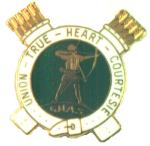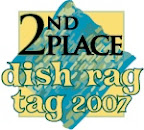But it's always the case that when we adopt a tool, even one as powerful as e-mail, we become aware of its limitations. E-mail is good for broadcasting information to a group of people, but it's not good for conducting conversations among more than two people. Some are responding to earlier messages after the conversation has moved on, because their e-mail client (unlike Gmail) lists all the messages separately, and they tend to start with the oldest one and deal with them in order. Some forget to hit "reply all" and end up starting a side conversation without meaning to, then not understanding why their contribution wasn't heard by everyone (or the opposite -- they meant (or should have intended) to start a side conversation, but mistakenly (or unwisely) sent their reply to the whole group). Documents to be read and annotated, when sent by e-mail, cannot have the annotations easily collected -- the e-mail exchange ends up with multiple attached documents, all different, that someone will have to compare and sort out. Sending large documents to an e-mail list typically runs into server limitations at somebody's end, necessitating breaking apart the attachments into smaller chunks and resending (creating the potential for version confusion). And not everyone is in the practice of saving e-mail indefinitely; almost certainly for some participants the record of decisions reached, information shared, issues raised gets destroyed (or becomes difficult to find) within a relatively short period of time.
Yet all these shortcomings of e-mail represent kinds of communication that organizations need to conduct all the time. No single tool solves all of them and delivers the universality of e-mail. So we decide to live with the limitations in order to avoid asking people to learn and utilize new tools -- online workspaces, document libraries, wikis, bulletin boards.
For people of a certain age -- mine -- we feel powerfully modern asking, "could you e-mail that to me?" (or worse, "Can you e-mail that to everyone in the group?"). But it's frequently the case that our 1993 suggestion is actually a bad idea in this twenty-first-century world, where there are betters tools to address the particular communication need (i.e., "Can you share that Google document with me?", "Can you start a thread about that in our Yahoo! group?", "Can you post that on the wiki?"). Yes, these changes require the flexibility to learn new processes, something in shorter and shorter supply as we age. But why should my personal limitations be the determiner of how my organization does business?
A like-minded colleague and I have spent most of the meeting discussing effective communication (and planning to take the discussion to the next level by working on a project and grant to showcase its pedagogical implications). Here are some of the features of effective organizational communication I've gleaned from this weekend's work:
- Effective communication is distributed. Various persons empowered with leadership and participation roles in the organization need to be given appropriate levels of ability to initiate and carry out communication directly, without passing through an administrative, staff, or technological bottleneck.
- Effective communication is structured. Brainstorming space/time is needed, but not all space is brainstorming space/time. Structure sends us important messages about the goal of the communication, and about the nature of the process that will achieve that goal.
- Effective communication is targeted. Not all information is needed by everyone. The more information that is relevant to me is cluttered by or buried under irrelevant information, the less likely it is that I'll absorb and be able to act on the relevant information.
- Effective communication is cross-referenced. Links lead to complete previous discussions or decisions, which are pithily summarized in the present communication. Links lead to background information or possible models for action, which are pithily summarized in the present communication.
- Effective communication is archived. The previous discussions, decisions, versions, etc., must be available to be referenced.
- Effective communication is efficient. Time spent reiterating, resending, getting the new participants up to speed, going off-topic, etc., is time that is not available for doing productive work.





No comments:
Post a Comment